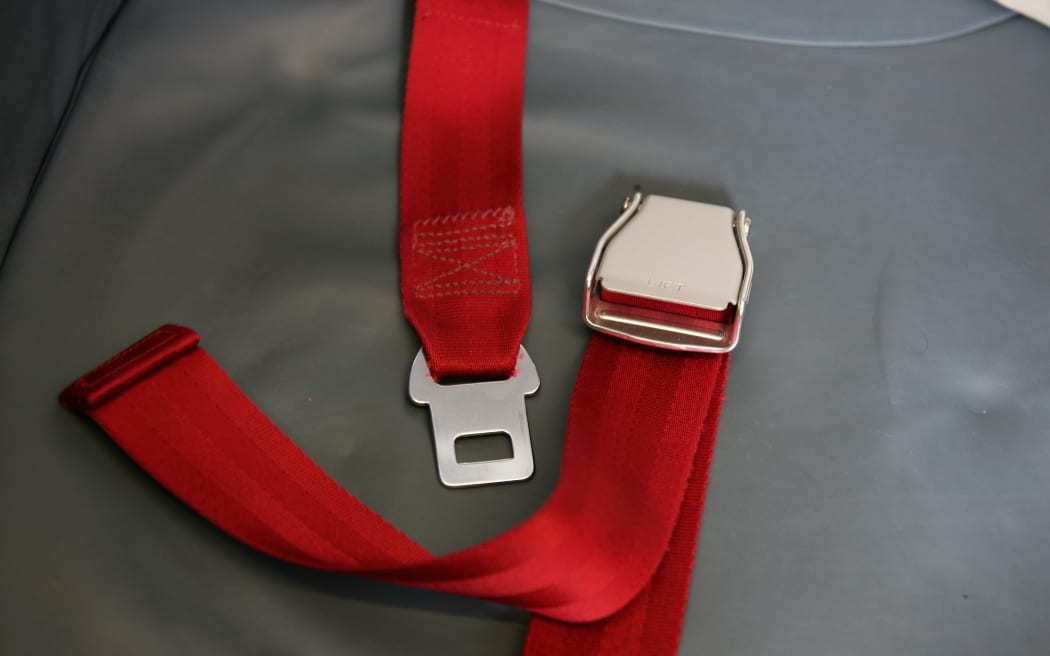
A car-seat-like restraint system for babies is recommended by airlines overseas but not enforced.(File image) Photo: Wikipedia
Air safety experts are calling for airlines to mandate safer restraints for babies and for them to not sit on an adult's lap.
The loop belts used in New Zealand planes, which attach young children to an adult's lap, are banned in the US and Canada because they are unsafe in a crash.
Vancouver-based air safety expert Barbara Dunn told Nine to Noon infants and young children should have their own seats with a special restraint.
"The safest way for infants and children to travel is in their own seat, in a certified restraint system," she said.
The loop belts used in New Zealand caused more harm than good in a crash, Dunn said.
"In crash forces, obviously the body is going to be thrown forward," she said.
"The adult body is going to jack-knife, as is the body of the child, and they're going to slam into the seat in front of them."
In such an incident, the child would not only receive the full force of the crash on the seat in front, but also the weight of their parent or guardian.
A 2015 advisory from the US Federal Aviation Administration said "during dynamic testing, the forward flailing of the adult and child resulted in severe body impacts against the forward seat".
"You can imagine sitting with an infant on your lap, attached to a belly-belt, you and the infant are going to be thrown into the seat in front of you, and you're both [going] to sustain severe abdominal injuries," Dunn said.
The alternative, a car-seat-like restraint system, is recommended by airlines overseas but not enforced. Parents would typically have to bring their own gear, and pay for an additional seat.
"They allow them, but they don't mandate them," Dunn said.
"They all recommend them, they understand this is the safest way to travel, but no-one has stepped up to the plate to promulgate regulations, and no airline has stepped up to require them."
It was a difficult barrier to overcome, Dunn said.
"[Airlines] don't carry them, and the reason is: how do you distribute them evenly? If you have 20 children on your flight, and you give all of them a restraint system, how do you then get them back in time for the next lot of passengers?" she said.
"So really the best route to go is to have the adult provide the seat," she said, similar to how parents would pack their own car-seat for travel.
Although it was a difficult problem to solve, it was an obvious step for the industry to take, Dunn said.
"Cabin crew are required to lock in our coffee pots for take off and landing, but we're not required to secure children," she said.
"We wouldn't consider travelling in a car without adequately restraining our children, so why we think it's okay to do this in an aircraft, where crash forces are far greater than those experienced in [cars], is beyond me."
A New Zealand Civil Aviation Authority spokesperson said there was "currently no change to CAA regulations on how children should be restrained in an aircraft seat," but noted car seats and child harnesses were allowed on most aircraft.
In New Zealand, the CAA requires - at a minimum - children to be held by an adult while tethered to them with a "supplementary loop belt".

